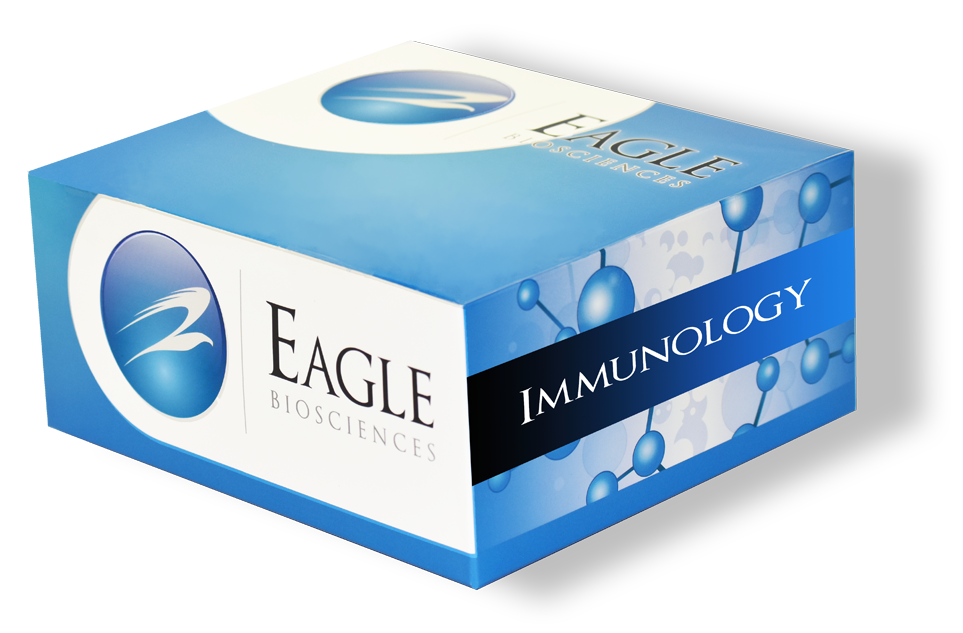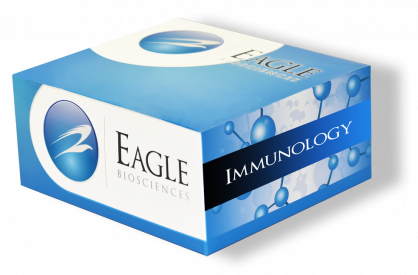SeroCP C. pneumoniae IgM ELISA Assay
The SeroCP C. pneumoniae IgM ELISA Assay is For Research Use Only
Size: 1×96 wells
Sensitivity: Cut-Off Control
Incubation Time: 2.25 hours
Sample Type: Serum
Sample Size: 5 µl
Alternative Name: Chlamydia pneumoniae
Assay Principle
SeroCP™ Plates are supplied coated with purified elementary bodies of C. pneumoniae (TWAR 183) antigens. Serum to be tested is diluted and then incubated in the SeroCP™ plate for 1h at 37°C. In this step, C. pneumoniae antibodies are bound to the immobilized antigens. Non-specific antibodies are removed by washing. Anti-human IgM conjugated to Horseradish Peroxidase (HRP) is added and incubated 1h at 37°C. In this step, the HRP-Conjugate is bound to the prebound antigen-antibody complex. Unbound conjugate is removed by washing. Upon the addition of TMB-Substrate, the substrate is hydrolyzed by the peroxidase, yielding a blue solution of the reduced substrate. Upon the addition of the Stop Solution, the blue color turns yellow and should be read by an ELISA reader at a wavelength of 450nm. The absorbance is proportional to the amount of the specific antibodies that are bound to the coated antigens.
References
- Kuo, C.C., Jackson L.A. and Grayston, J.T. (1995). Chlamydia pneumoniae (TWAR)Clin Microbiol REV; 8:451-461.
- Saikku, P., Leinonen, M., Tenkanen, L., Linnanmaki, E., Ekman, M.R., Manninen, V.,Manttari, M., Frick, M.H. and Huttunen, J.K. (1992). Chronic Chlamydia pneumoniaeinfection as a risk factor for coronary heart disease in the Helsinki heart study. Ann.Intern. Med. 116: 273-278.
- Puolakkainen, M., Saikku, P., Leinonen, M., Nurminen, M., Vaananen, P. and Makela, P.H. (1984). Chlamydia pnemonitis and its serodiagnosis in infants. J. Infect. Dis. 149: 598-604.
- Campbell, L.A. (1993). PCR detection of Chlamydia pneumoniae In Diagnostic Molecular Microbiology: Principles and Applications (Persing, D.H., Smith, T.F., Tenover, F.C. and White, T.J., Eds). ASM Press. pp. 247-252
- Henry-Suchet, J., Askienazy-Elbhar, M., Thibon, M., Revol, C. and Akue, B.A. (1994). Post-therapeutic evolution of serum chlamydia antibody titers in women with acute salpingitis and tubal infertility. Fertility and Sterility. 62: No. 3.
- Saikku, P., Matila, K., Nieminen, M.S., Huttunen, J.K., Leinon, M., Eckman, M.R., Makela, P.H. and Valtonen, V. (1988). Serological Evidence of an Association of a Novel Chlamydia TWAR with Chronic Coronary Heart Disease and Acute Myocardial Infarction. Lancet. 2: 983-986.
- Grayston, J.T., Cambell, L.A., Mordhorst, C.H., Saikku, P., Thom, D. and Wang, S.P. (1989). A New Respiratory Pathogen: Chlamydia pneumoniae Strain TWAR. J. Inf. Dis. 161: 618-625.
- Saikku, P., Leinonen, M., Tenkanen, L., Linnanmaki, E., Ekman, M.R., Mannin, V. Manttari, M., Frick, M.H. and Huttunen, J.K. (1992). Chronic Chlamydia pneumoniae Infections as a Risk Factor for Coronary Heart Disease in the Helsinki Heart Study. Ann. of Int. Med. 116: 273-278
Related Products
SeroCP RT C. pneumoniae IgM ELISA Assay
SeroCP C. pneumoniae IgA ELISA Assay Kit
SeroCP C. pneumoniae IgG ELISA Assay


